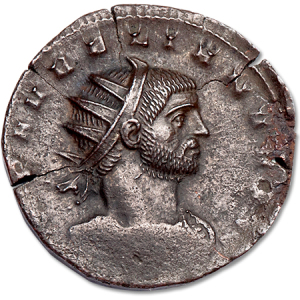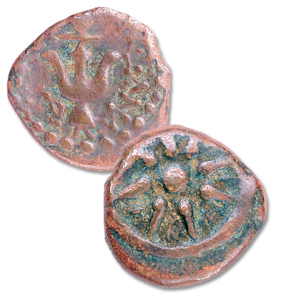Looking for a gift with true meaning? Consider Biblical Coins…
History and coins go hand in hand. Coins help archaeologist date sites and history helps to identify the coins, placing them in context. Genuine coins from the time of Jesus not only bring biblical stories to life, but also make treasured gifts of significance.
First off, biblical coins offer the attraction of being able to hold something in your hand that was actually used by people living centuries ago. And then, there’s the attraction of owning something mentioned in the Bible – that’s awe-inspiring.
A gift from the heart!
Take the Widow’s Mite – struck over 2,000 years ago – this ancient bronze coin is one of the most common coins used back then, sort of like our cent today. First struck in 78 B.C. under ruler Alexander Jannaeus, the Widow’s Mite continued to circulate during Jesus’ lifetime. When Jesus saw a poor widow give just two Mites to the temple treasury, the coins became famous.
In Mark 12:41-44, Jesus praises the poor widow who threw in two Mites. The moment is also mentioned in Luke 21:1-4: “Truly I say to you, this poor widow has put in more than all.” The Mite, or bronze Prutah, was the smallest coin circulating in Jerusalem at the time. Despite this, Jesus told his disciples the widow’s gift was greater than all those who had given more money – because she had given all she had – a gift from the heart.
Then there’s the Tribute penny. Although there are many candidates for the coin Jesus referred to when asked about paying taxes to Rome, the Denarius of Augustus or Tiberius is the most likely one. Augustus ruled during Jesus’ childhood and youth, and Tiberius during most of his ministry and at the time of his crucifixion.
“Render therefore unto Caesar…”
In Matthew 22:15-21, a Jewish high priest tries to trick Jesus into a statement of treason by inquiring whether it was lawful to pay tribute to Caesar. Jesus said, “Show me the tribute money.” And they brought him a penny. Then, he asked them, “Whose is this image? And whose superscription?” They answered, “Caesar’s.” Aware of the priests’ plot, he said, “Render therefore unto Caesar the things which are Caesar’s; and unto God the things that are God’s.”

This detailed bronze Antoninianus was hand struck over 1,700 years ago during the A.D. 270-275 reign of Aurelian, a pagan Roman emperor called the “Father of Christmas.” In 274, Aurelian began celebrating the birthday of sun god Sol on December 25th, and this annual tradition included gladiatorial games and feasting. Christians, frequently persecuted at the time, began celebrating the birth of Jesus on December 25th to avoid detection.
Did you ever wonder why this silver coin is called a Tribute “penny?” In 1611, when the Bible was translated into the King James Version, the Anglo-Saxon British word “penny” replaced Denarius. At the time in England, the penny was the standard denomination in circulation and abbreviated d. (for denarius).
These are just two of the many coins filled with religious, cultural and historic significance, but there are others like the Antoninianus of Emperor Aurelian known as the “Father of Christmas,” the 2,000 year-old coin of Azes II – possibly one of the three wise men or the silver “Hand of God” coin. Another way to give coins as gifts is as jewelry – many are made into pendants, rings and other items. For something more personal why not consider the Gold-Plated Sterling Silver Cross Pendant, featuring the Widow’s Mite at the center. It’s sure to be a conversation starter.
Imagine a gift of something so old… straight out of history… biblical coins are the perfect choice. What biblical or religious-inspired coins are your favorites? Would you consider giving them as gifts? If so, why?





